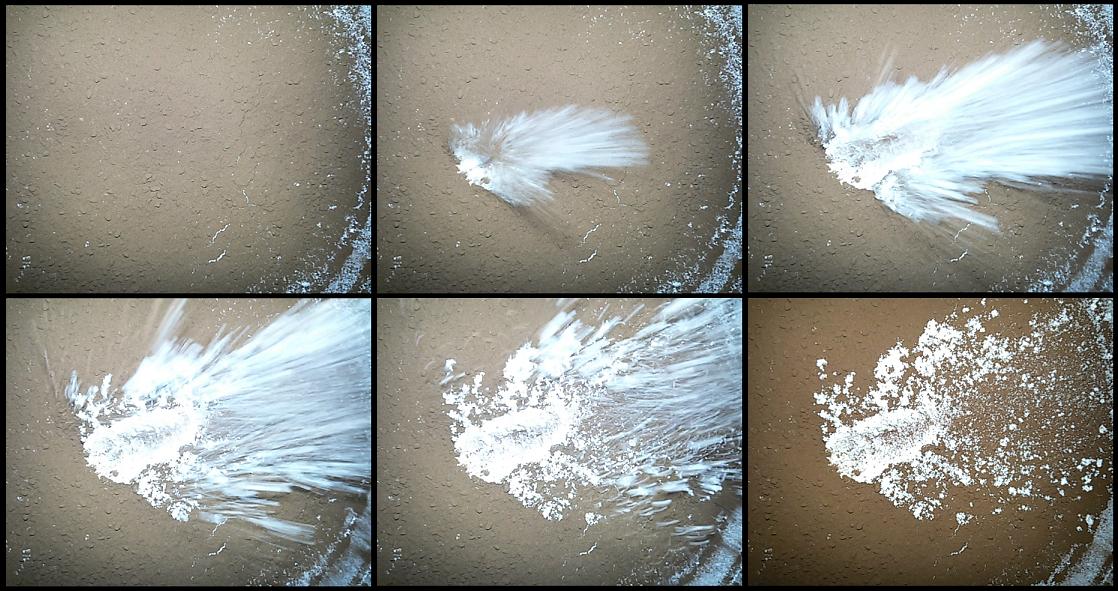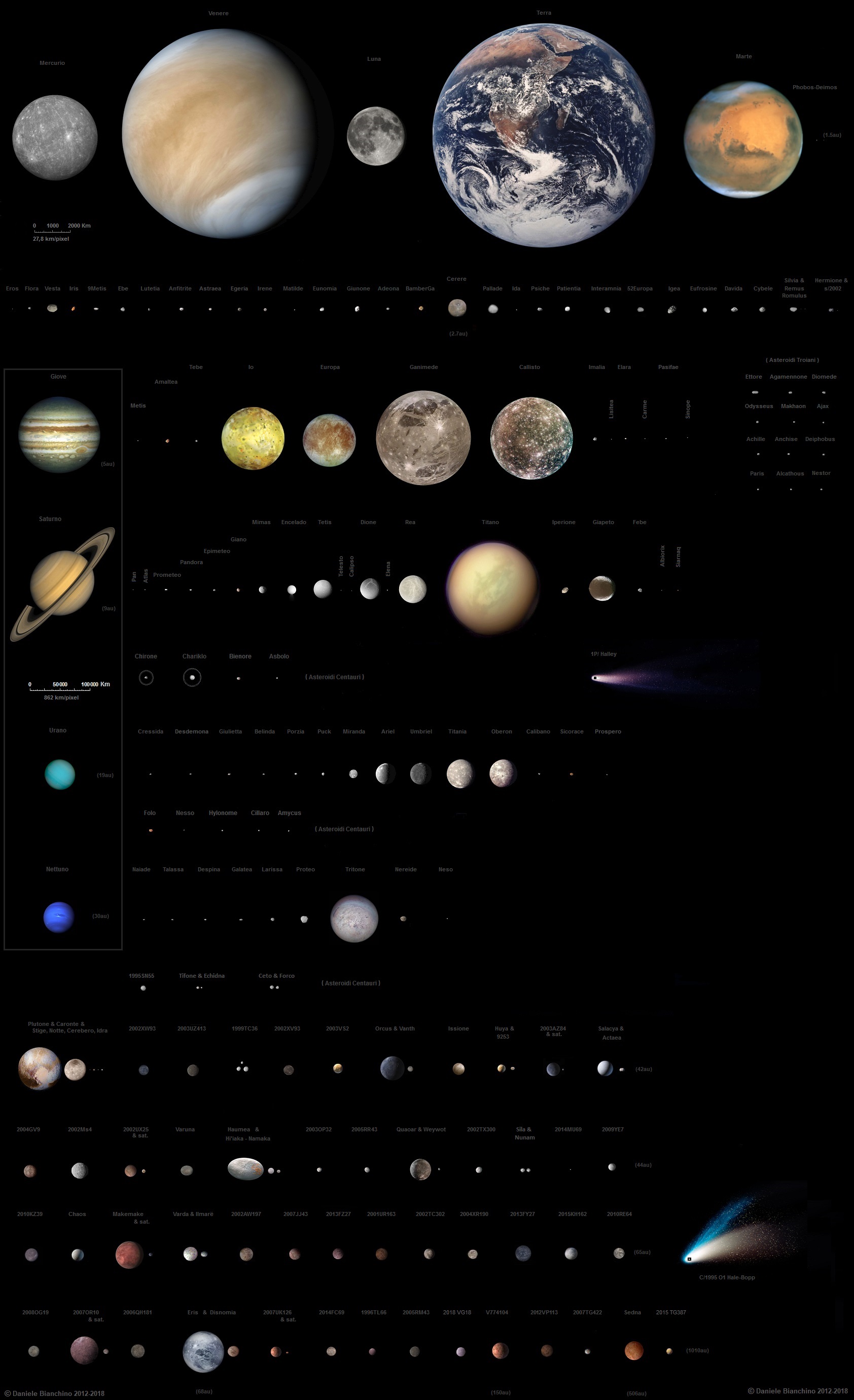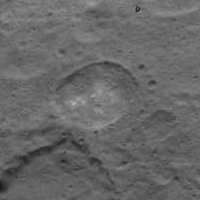Dawn's first orbit, including RC3, March 6, 2015- June 15, 2015 |

  |
Dawn's first orbit, including RC3, March 6, 2015- June 15, 2015 |
 Jun 9 2015, 12:55 AM Jun 9 2015, 12:55 AM
Post
#406
|
|
|
Solar System Cartographer     Group: Members Posts: 10149 Joined: 5-April 05 From: Canada Member No.: 227 |
I was still trying to figure out which lake it was shaped like.
Meanwhile, here's the latest image: http://dawn.jpl.nasa.gov/multimedia/images...tml?id=PIA19563 Plus a very nice flyover (with slightly exaggerated topography): http://www.jpl.nasa.gov/video/details.php?id=1380 Phil -------------------- ... because the Solar System ain't gonna map itself.
Also to be found posting similar content on https://mastodon.social/@PhilStooke NOTE: everything created by me which I post on UMSF is considered to be in the public domain (NOT CC, public domain) |
|
|
|
 Jun 9 2015, 11:58 AM Jun 9 2015, 11:58 AM
Post
#407
|
|
 Junior Member   Group: Members Posts: 98 Joined: 30-November 05 From: Antibes, France Member No.: 594 |
I ve seen spot 5 in a dream last night.
spot 5 corresponded to a multitude of circular boiling lakes of water. I became rapidly aware that the fog generated over the lakes exerted a downward pressure that allowed the lakes to remain liquid. Captivating experience! |
|
|
|
 Jun 9 2015, 01:08 PM Jun 9 2015, 01:08 PM
Post
#408
|
|
|
Member    Group: Members Posts: 910 Joined: 4-September 06 From: Boston Member No.: 1102 |
I'm glad to see such helpful good eyes on this forum. The dark area to the NW (shown below) I think you're referring to would be heavily shadowed craters. I'll check to see how easy it is to substitute another image in that area. Where would be the area to the ENE of spot 5? I also still have to catch up with a map that identifies the white spots. Scalbers, those are the "lakes" to the NE. The ones to the ENE are similar and about 1/4 of the way on a line from the top right corner to area 5. Now that my brain is tuned to shadowed craters, I'm sure that is the story for ENE as well. -------------------- |
|
|
|
 Jun 9 2015, 02:17 PM Jun 9 2015, 02:17 PM
Post
#409
|
|
 Member    Group: Members Posts: 120 Joined: 26-May 15 From: Rome - Italy Member No.: 7482 |
It is tricky to discern the orientation of the valleys between the large basin and spot 5, so I took scalber's cylindrical map and brought it into Celestia: [attachment=36024:Ceres_projections.jpg] This might be his real color? Here, lower, older rocks were drawn up by the central rebound. The tan in the middle is Cambrian, and the red dot represents huge, rootless blocks of Precambrian granite. The outer ring is younger Ordovician. A cross section of the structure: [attachment=36019:Decaturville_2.png] This could be one of the good reasons for central bright spot 5. I hope soon we will know.. Greetings - this map version has some revisions in the area of the two southern basins to try and show more details. [attachment=36022:ceres_rgb_cyl_1mb.jpg] Full 4K resolution and polar views are here. Incredible.. many years, long-awaited and imagined.. and is now fully mapped .. Thanks, |
|
|
|
 Jun 9 2015, 03:53 PM Jun 9 2015, 03:53 PM
Post
#410
|
|
 Member    Group: Members Posts: 714 Joined: 3-January 08 Member No.: 3995 |
|
|
|
|
 Jun 9 2015, 05:34 PM Jun 9 2015, 05:34 PM
Post
#411
|
|
 Member    Group: Members Posts: 120 Joined: 26-May 15 From: Rome - Italy Member No.: 7482 |
What a wonderful experiment! I have nothing of any great profundity to say, except that some of your results are very reminiscent of the Voyager Mountains on Iapetus. Yes Ian R, it reminds the white characteristics over Iapetus surface. Thanks, Somebody sop him! He's doing science! This is too cool. Very much enjoy such visual simulations. Many Thanks.. Excellent stuff, Daniele! If you've still got your experiment tray ready to go, could you try making a crater with an extremely shallow angle impact? Ok, tonight I try a normal angle impact..  and a low angle impact (it created a crater oblong):  I love to see an experiment, and the cartoon scenarios are also a great basis for discussion. Scenarios b and c look good to me for the various white spots. I would just add that in scenario b the original big impact would likely have exposed fresh ice, subsequently re-covered with dirt before the recent smaller impact event. (You don't need to rely on the coincidence that the large impact narrowly missed going deep enough, allowing the smaller one to finish the job.) You have reason, was better show exposed fresh ice, subsequently re-covered with dirt.. at that moment I wanted to show craters that had gone more 'in depth, but there are many other possible scenarios for bright spot 5.. Many Thanks That is incredibly cool Daniele, reminiscent of some of Emily's montages. Can I make 2 small suggestions however? 1) The Chariklo image is the only non-photograph, its an artist's conception. Perhaps identify it as such 2) An image of Proteus, to scale, will remind viewers that the transition from 'round' to 'potato' shaped is not a totally predictable one P Thanks "antipod", 1. Chariklo is as I have imagined (I have some modified a umbriel moon). 2. It was not a case. I am very fascinated from the small spherical bodies like Mimas or Miranda. I wanted to include just the spherical and small planetary bodies, for paragone at Ceres; for this reason I haven't put irregular bodies like Proteo moon, or Pallas and Iperione. I have included Vesta, a planetary body more 'bigger than others but still uneven, and the others asteroids visited from a Space probes. One day I try to delete Vesta and I add Proteus moon.. Your advice are welcome, even others, Many Thanks; in this collage you can see Ceres compared with Tethis, DIone, Ariel, Umbriel:  To my work I use just simply "paint PC program"; I posted them on my exstrasolar planets website since 2012. They have been modified and updated several times over the years, with new images, new data, new dimensions. I am very precise. I do it for passion only.. . This is a big work that I did some years ago: 126 corp of the Solar system compared 27,8 km/pixel (also the recent ceres RC3 obviously)  I have another work since 2011, 32 exstrasolar system (850 km / pixel), but I know that can't talk about exstrasolar planets in this Forum; Sorry for my English, Many THanks, Daniele |
|
|
|
 Jun 9 2015, 07:26 PM Jun 9 2015, 07:26 PM
Post
#412
|
||
 Member    Group: Members Posts: 714 Joined: 3-January 08 Member No.: 3995 |
New image:
http://dawn.jpl.nasa.gov/multimedia/images...tml?id=PIA19564 Three of the craters may show signs of subsidence in their centers: I wonder if the center of spot 5 crater has similar features. Plus, the crater in the right of the image has scattered bright spots. These are associated with the darkish area known as Piazzi. |
|
|
|
||
 Jun 9 2015, 07:28 PM Jun 9 2015, 07:28 PM
Post
#413
|
|
 Member    Group: Members Posts: 423 Joined: 13-November 14 From: Norway Member No.: 7310 |
Dimmer bright spots in another crater in the latest OpNav 9 image release:
 Edit: a little late to the party -------------------- |
|
|
|
 Jun 9 2015, 07:34 PM Jun 9 2015, 07:34 PM
Post
#414
|
|
 Member    Group: Members Posts: 714 Joined: 3-January 08 Member No.: 3995 |
|
|
|
|
 Jun 9 2015, 07:46 PM Jun 9 2015, 07:46 PM
Post
#415
|
|
 Member    Group: Members Posts: 714 Joined: 3-January 08 Member No.: 3995 |
|
|
|
|
 Jun 9 2015, 07:49 PM Jun 9 2015, 07:49 PM
Post
#416
|
|
 Senior Member     Group: Members Posts: 3419 Joined: 9-February 04 From: Minneapolis, MN, USA Member No.: 15 |
New image: http://dawn.jpl.nasa.gov/multimedia/images...tml?id=PIA19564 Three of the craters may show signs of subsidence in their centers... I don't know, those look more like doming than subsidence to me. In other words, the features you point to look like positive-relief features, not negative-relief as you would expect from subsidence. -the other Doug -------------------- “The trouble ain't that there is too many fools, but that the lightning ain't distributed right.” -Mark Twain
|
|
|
|
 Jun 9 2015, 08:02 PM Jun 9 2015, 08:02 PM
Post
#417
|
|
|
Senior Member     Group: Members Posts: 3516 Joined: 4-November 05 From: North Wales Member No.: 542 |
|
|
|
|
 Jun 9 2015, 10:09 PM Jun 9 2015, 10:09 PM
Post
#418
|
||
 Member    Group: Members Posts: 714 Joined: 3-January 08 Member No.: 3995 |
I don't know, those look more like doming than subsidence to me. In other words, the features you point to look like positive-relief features, not negative-relief as you would expect from subsidence. I have collapsed domes in mind (central peaks technically are domes.... I think), specifically something resembling a pingo -- sort of. From Wikipedia: Perhaps the central rebound drew up ice-rich material from below (icier than the shallower regolith). This ice, now much closer to the surface, melted/sublimed away, causing the overburden to collapse (subside) into the void, leaving pits or other collapse/subsidence structures behind. Maybe in some cases, salts are drawn to the surface during this deicing process. This is yet another hypothesis that may be shot down when more evidence comes in, but it is fun to speculate. |
|
|
|
||
 Jun 10 2015, 06:03 AM Jun 10 2015, 06:03 AM
Post
#419
|
|
|
Junior Member   Group: Members Posts: 78 Joined: 20-September 14 Member No.: 7261 |
Plus a very nice flyover (with slightly exaggerated topography): http://www.jpl.nasa.gov/video/details.php?id=1380 Funny, DLR posted the same video with DLR watermarks and intro on its own website half a day earlier... http://www.dlr.de/dlr/en/desktopdefault.as...#/gallery/19641 At least JPL kept the credits in it |
|
|
|
 Jun 10 2015, 01:43 PM Jun 10 2015, 01:43 PM
Post
#420
|
|
 Member    Group: Members Posts: 423 Joined: 13-November 14 From: Norway Member No.: 7310 |
Region 5 is still a mystery from the Survey orbit. For some reason I find that quite amusing.
QUOTE The region with the brightest spots is in a crater about 55 miles (90 kilometers) across. The spots consist of many individual bright points of differing sizes, with a central cluster. So far, scientists have found no obvious explanation for their observed locations or brightness levels. "The bright spots in this configuration make Ceres unique from anything we've seen before in the solar system. The science team is working to understand their source. Reflection from ice is the leading candidate in my mind, but the team continues to consider alternate possibilities, such as salt. With closer views from the new orbit and multiple view angles, we soon will be better able to determine the nature of this enigmatic phenomenon," said Chris Russell, principal investigator for the Dawn mission based at the University of California, Los Angeles. Another note: QUOTE Numerous other features on Ceres intrigue scientists as they contrast this world with others, including protoplanet Vesta, which Dawn visited for 14 months in 2011 and 2012. Craters abound on both bodies, but Ceres appears to have had more activity on its surface, with evidence of flows, landslides and collapsed structures.
-------------------- |
|
|
|
  |

|
Lo-Fi Version | Time is now: 23rd April 2024 - 02:26 PM |
|
RULES AND GUIDELINES Please read the Forum Rules and Guidelines before posting. IMAGE COPYRIGHT |
OPINIONS AND MODERATION Opinions expressed on UnmannedSpaceflight.com are those of the individual posters and do not necessarily reflect the opinions of UnmannedSpaceflight.com or The Planetary Society. The all-volunteer UnmannedSpaceflight.com moderation team is wholly independent of The Planetary Society. The Planetary Society has no influence over decisions made by the UnmannedSpaceflight.com moderators. |
SUPPORT THE FORUM Unmannedspaceflight.com is funded by the Planetary Society. Please consider supporting our work and many other projects by donating to the Society or becoming a member. |

|